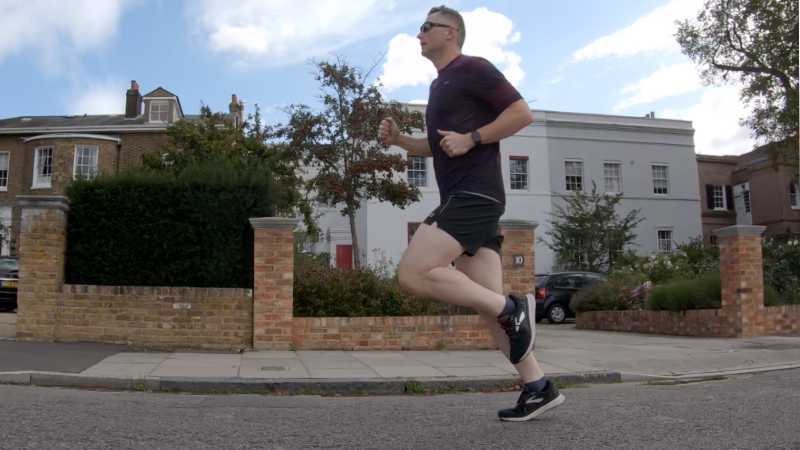After about 35 years of running, I’m finally starting to get the hang of it.
In my mid teens to twenties, it was part of playing rugby – something I did with moderate success including a season in Australia (thank you Perth-Bayswater 1989) So running was integral to my bigger fitness plan. It took on a life of its own while I was in Brighton. I still look back on my route that incorporated the seafront, up and down the ramps from Palace to West Pier, as my favourite – even in the middle of winter.
Now, in my 50s, it is purely recreational. It remains my preferred choice of activity to unwind. Over the last few years, I’ve settled into running 3-4 times week, with familiar routes of between 7 and 12km. There might be a bike ride in for good measure, sometimes in lieu of a run, sometimes in addition. And more recently, some strength work, more of that later.
For context I’m also about 185cm and 83kg – down from my lockdown peak at 90kg.
So that’s the first thing I’ve learnt – you can’t outrun a bad diet. Someone else’s phrase but I’m going to endorse it thoroughly. I do enjoy eating and drinking well – and these two things need to balance – calories in vs calories used. But it is way too easy to overeat and that means the weight goes on. An extra run or two doesn’t shed the kilos – you need to watch what you eat.
The next thing is injuries. When I was playing rugby, they might come from a heavy tackle – an impact or a fall. But running injuries don’t come from external factors – slips or trips. They seem to come from overtraining in some form, typically an increase in volume. They don’t always have a clear start either, a little niggle becomes a bit of pain becomes I CAN’T RUN THIS WEEK. Or month, or worse. So be really careful with how much you increase distance per run, runs per week or pace. Rest is really important.
Now fitness. According to my measurements – including an iPhone approximation of VO2 Max, I’m in a good place, my resting pulse is low and my blood pressure is normal. But I’m discovering that I’ve been doing this one wrong. Most of my runs have been at a moderate to quick (for me) pace. I’m now learning that slowing down for most sessions is the way to go. That adage of being able to hold an easy conversation during a run? Yes, I’m finally adhering to it. The advantage is less stress on my body and the plan is to gradually build the pace back up without loosing that ability to chat and run.
Strength. How strong are you? Many years ago I spent quite a bit of time in the gym – weights and cardio on the rowing machine. But since then I’ve clearly lost a bit of strength. What I didn’t realise until speaking with several physios and personal trainers during covid is just how strong you need to be to run.
Depending on who you ask, and whether it is on the level or downhill, runners hit the ground with between 2 and 6 times their bodyweight with each stride. So how much time do you spend squatting with heavy weights? That will build up quad strength, but what about your posterior chain – hamstrings and glutes? Hint: your glutes should be the biggest and strongest muscle group, but due to the amount of sitting most of us do, they tend to be very lazy, and your hamstrings end up compensating – which overuses them and makes them prone to tightness and injury. Stretching may not be the answer – it might be strengthening that you need.
My favourite running coach is James Dunne, start with his The Only 5 Exercises You REALLY Need for Stronger Running
Technique. Have you ever watched a video of yourself running, and from all directions? It’s really enlightening. Look for where your feet land – they should be pretty much under your body with each stride. If they are out in front, you are increasing the amount of shock that needs to be absorbed. This will be related to your cadence (steps per minute). Long strides tend to be slow so shorter, quicker, paces are better. You will also see this in the amount you bob up and down. No point pushing up when you should be pushing forwards!
Now, which part of your foot hits the ground first? While the video technique can show this, you can get a quicker and easier diagnosis by looking at a pair of running shoes you’ve been using for a while. Is the wear most noticeable around the heel? Is it roughly central or to one side? Is it symmetrical, mirrored on the other shoe or does one shoe wear more than the other?
All of these patterns will tell you about your running technique – and perhaps your physiology as uneven wear from one shoe to the other might mean an imbalance in strength or leg length from side to side. Alternatively, you have probably had your gait analysed in a running shop – overprinting perhaps, and advised to wear shoes accordingly.
You may have been told you need to move to a forefoot strike, where the heel doesn’t touch the floor. I’ve learnt that there is no right answer – it’s what works for you.
I run on my mid/forefoot – the wear pattern is noticeably concentrated under the balls of my feet. But this is the result of a conscious change I made about 10 years ago. I’d been heel striking for years and also over-pronation. Supportive shoes had helped but then I started to get more knee pain. Switching to a neutral shoe helped but didn’t solve the problem. So I changed my running style to a mid/forefoot strike. I even went though a few pairs of barefoot shoes – and trust me, you really don’t want to heel strike in those!
What I learnt, is that changing running form to avoid long standing injuries is a great way to get new injuries instead! Instead of knee pain you can have calf and Achilles pain instead!
If you are considering that change, I strongly recommend you do a lot of calf raises – double leg, single leg, weighted, on an slanted board etc and drop your running volume dramatically until you can stay off your heels without getting new pains.
Finally shoes. I’ve touched on this already with regards to gait, but even here I’d add a little more. Firstly, find quality shoes that fit. Try several brands, and don’t settle for anything less than great.
I’d suggest having two different types of shoe that you use on rotation. For me, one pair is quite cushioned and the other is a very light race shoe. I find that each provides different types of comfort and support and alternating prevents niggles occurring
The gait analysis and level of support becomes less of an issue if you choose to move away from heel striking. Take a look at cushioning may help with reducing injury risk although note that even that says “ignore everyone else’s advice” as each runner is unique.
However you run, I hope this helps you keep enjoying it!








